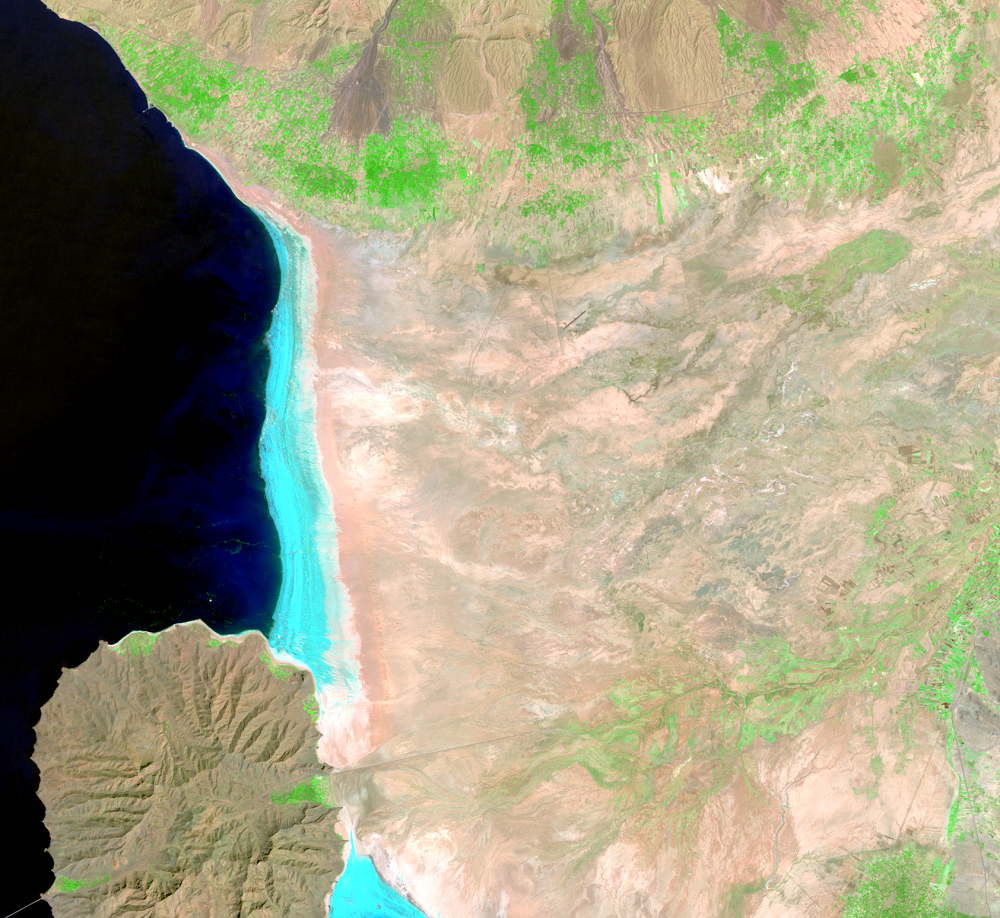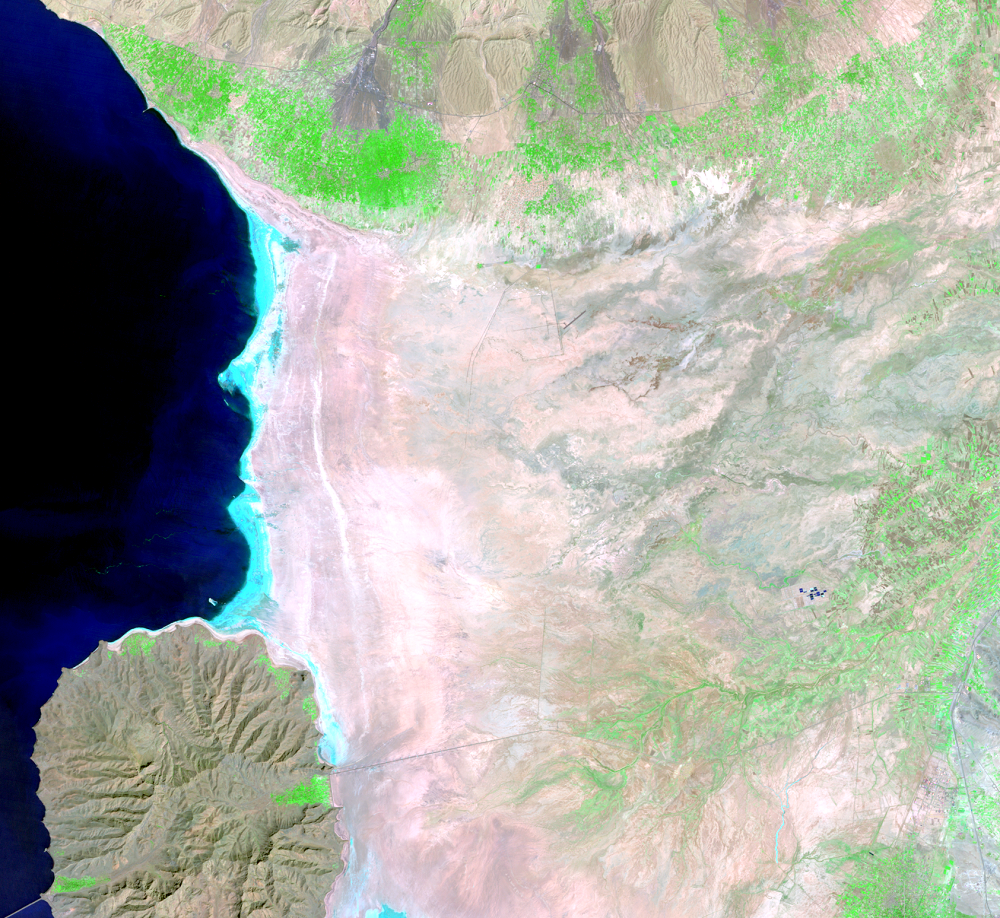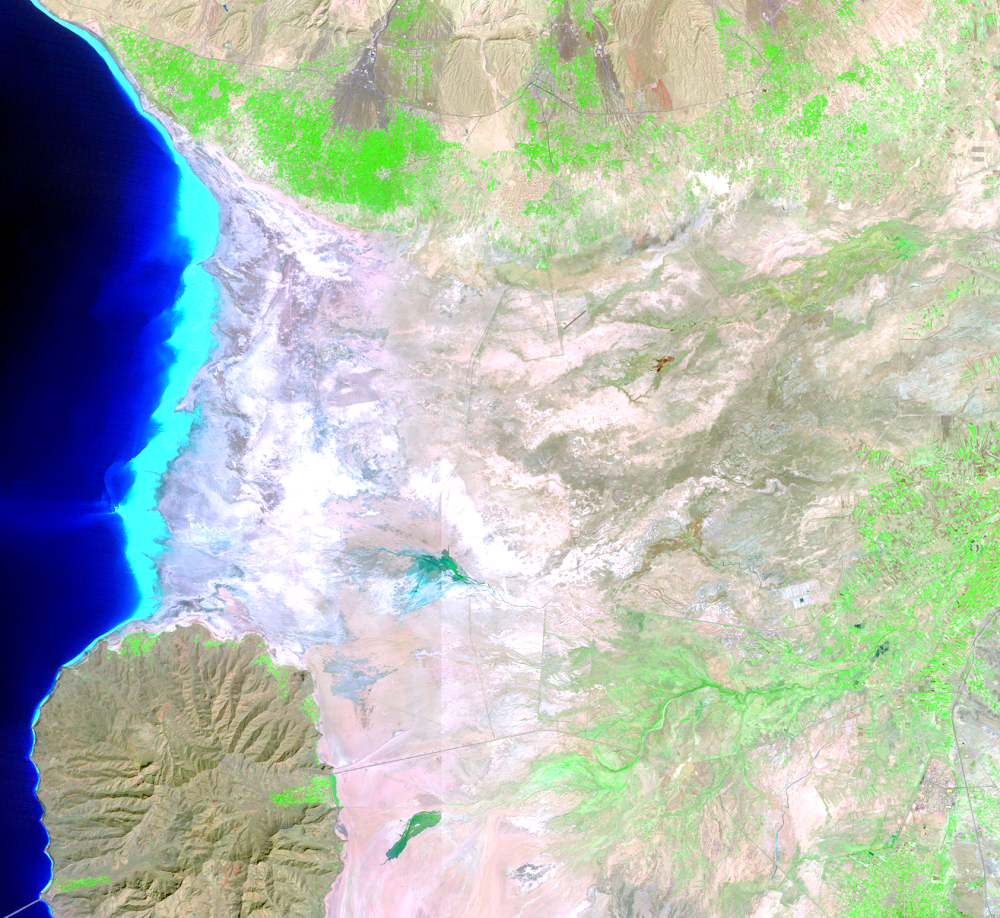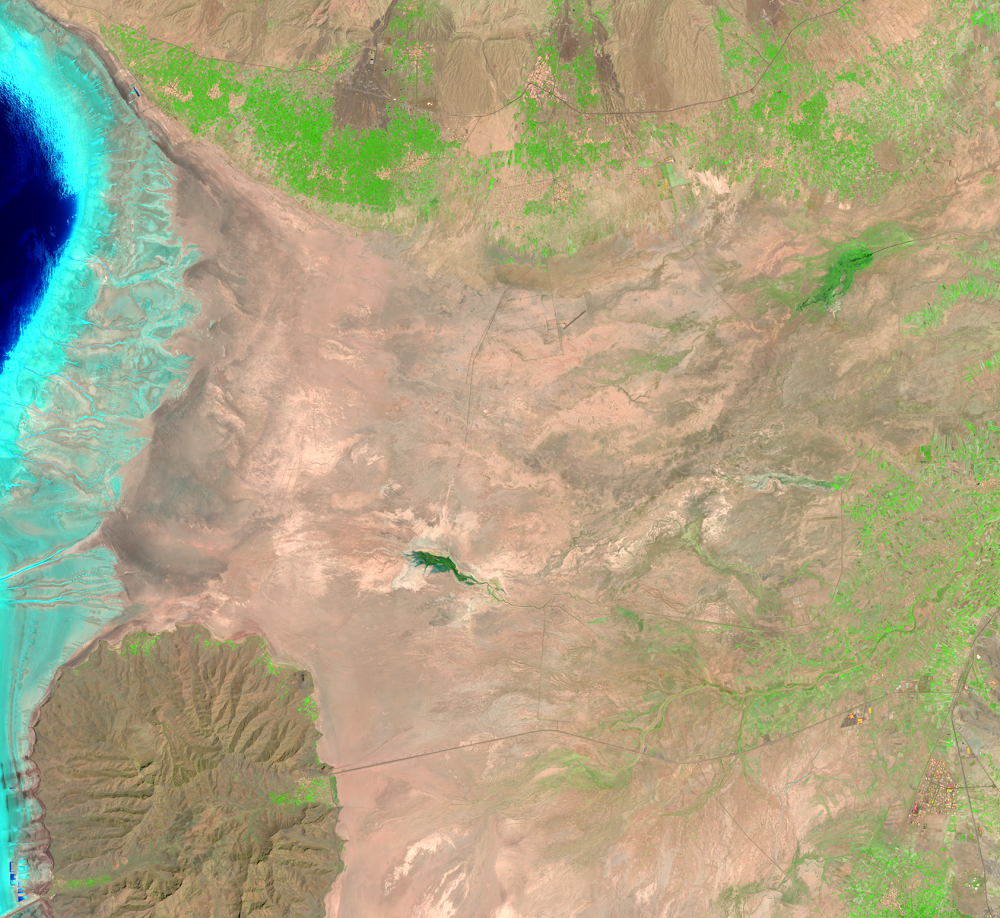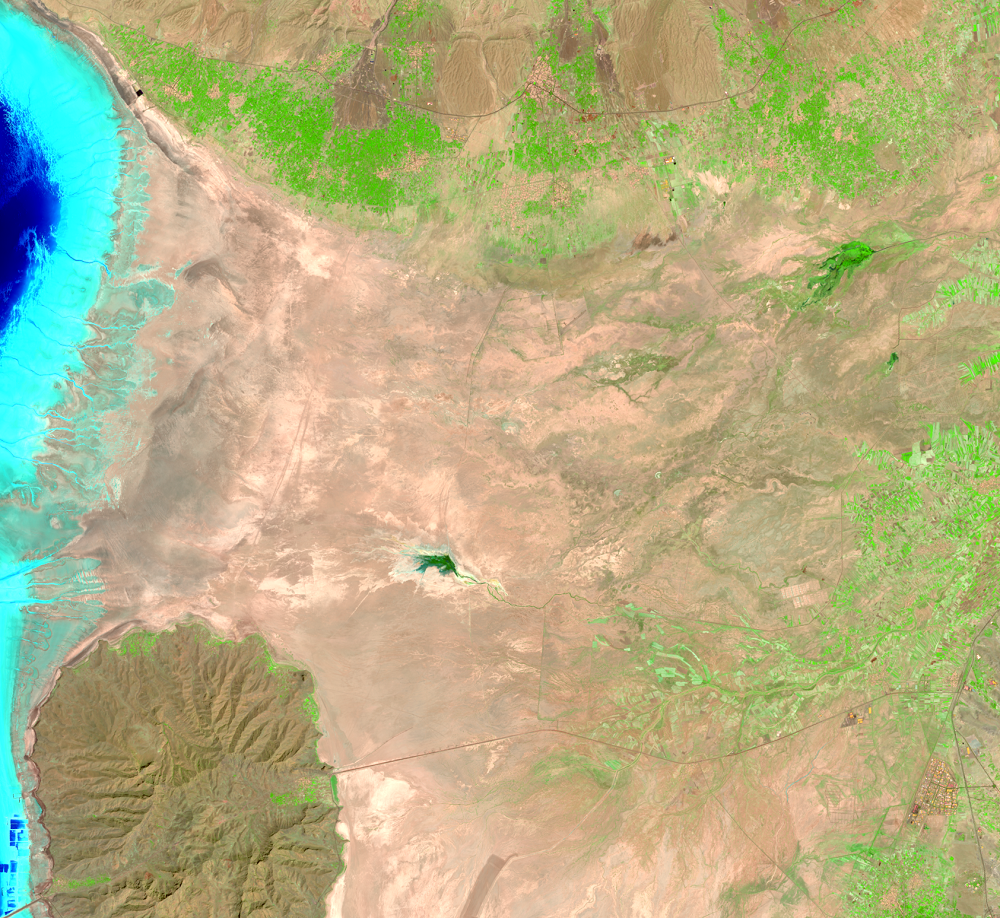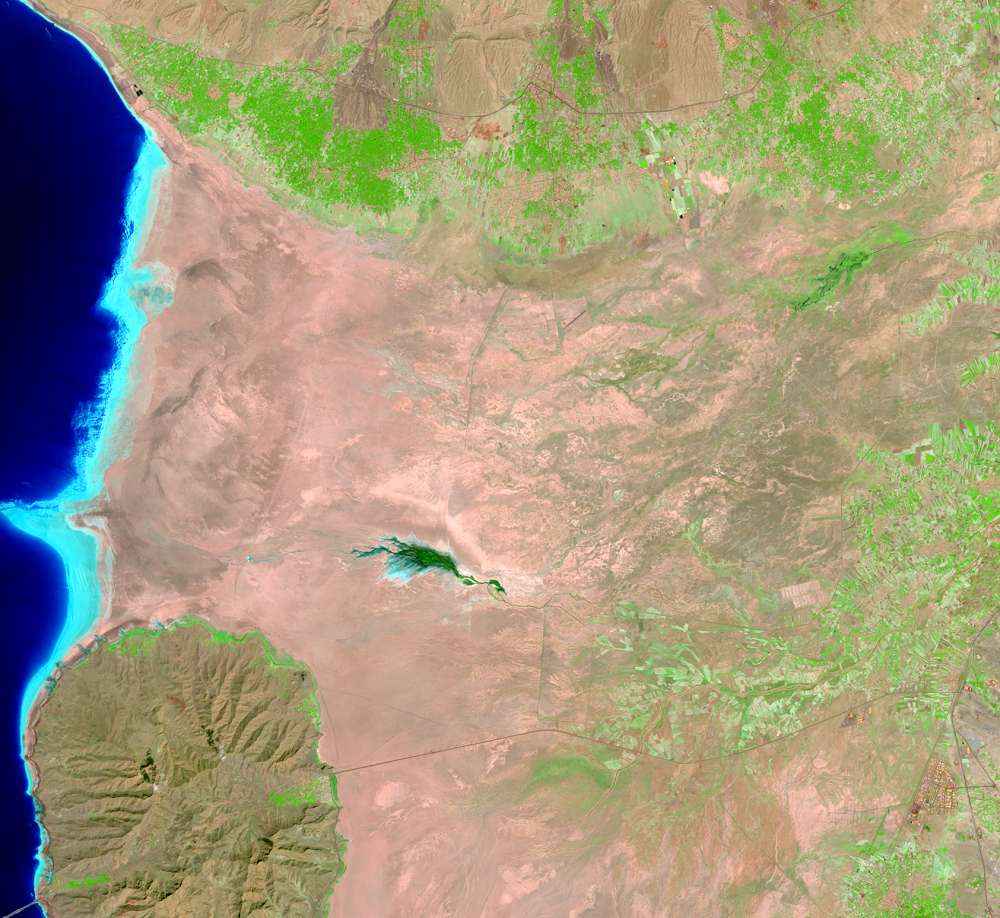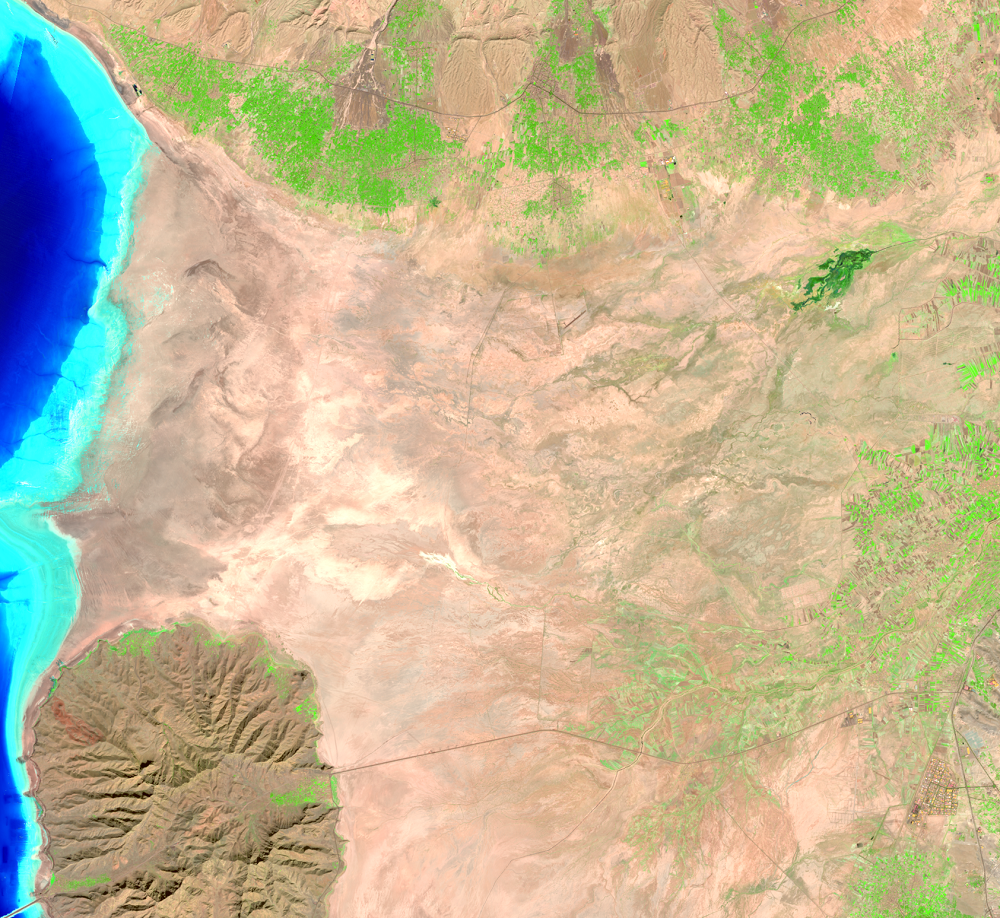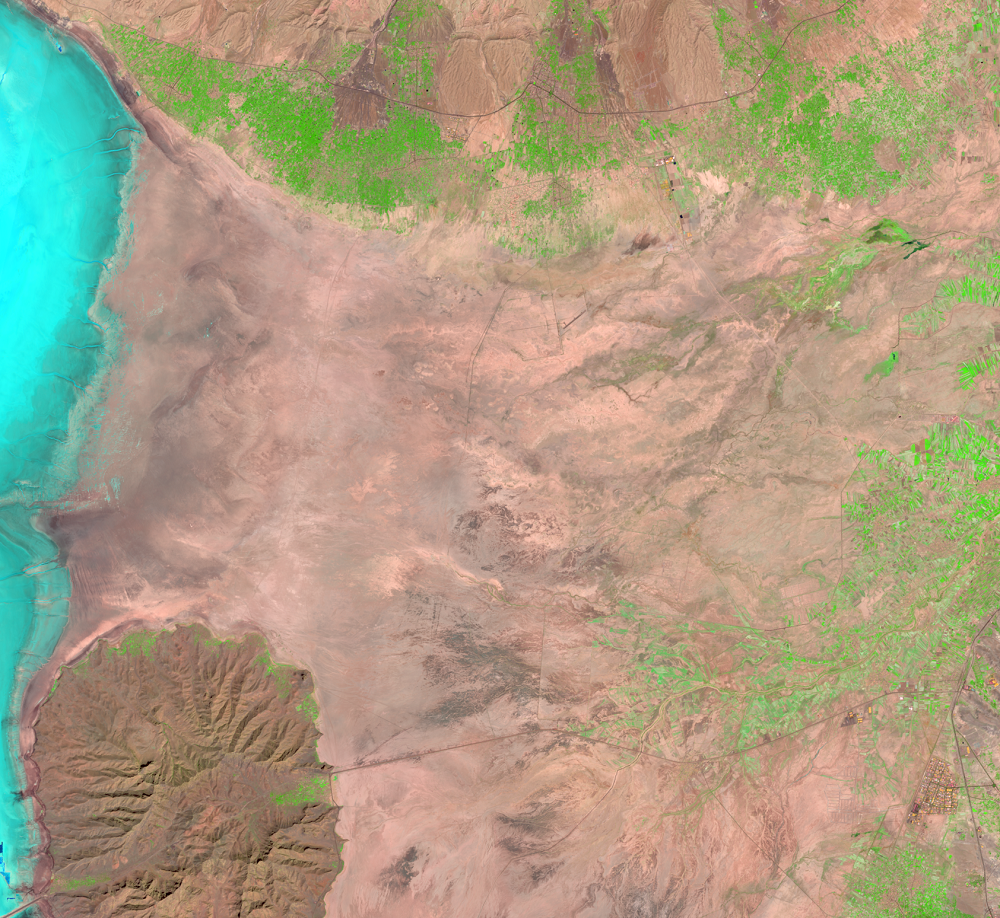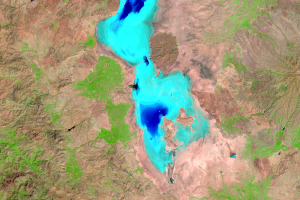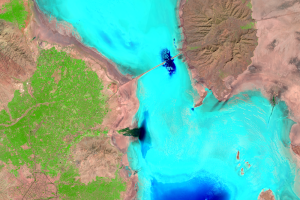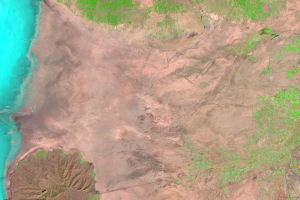
Causes and Plans
Earth Resources Observation and Science (EROS) Center - Earthshots
The diversion of water from the rivers for agricultural use is probably the most significant cause of Lake Urmia’s decline. Several dams have also been built on rivers that flow into the lake. Since 1996, droughts have further contributed to the lower lake levels.
Rainfall in 2018-19 brought water levels back up. That rainfall did not bring a permanent restoration of the lake, as the 2023 image shows.
No single fix can help the lake recover. But the continual monitoring from Landsat helps decision makers plan for the best solutions.

